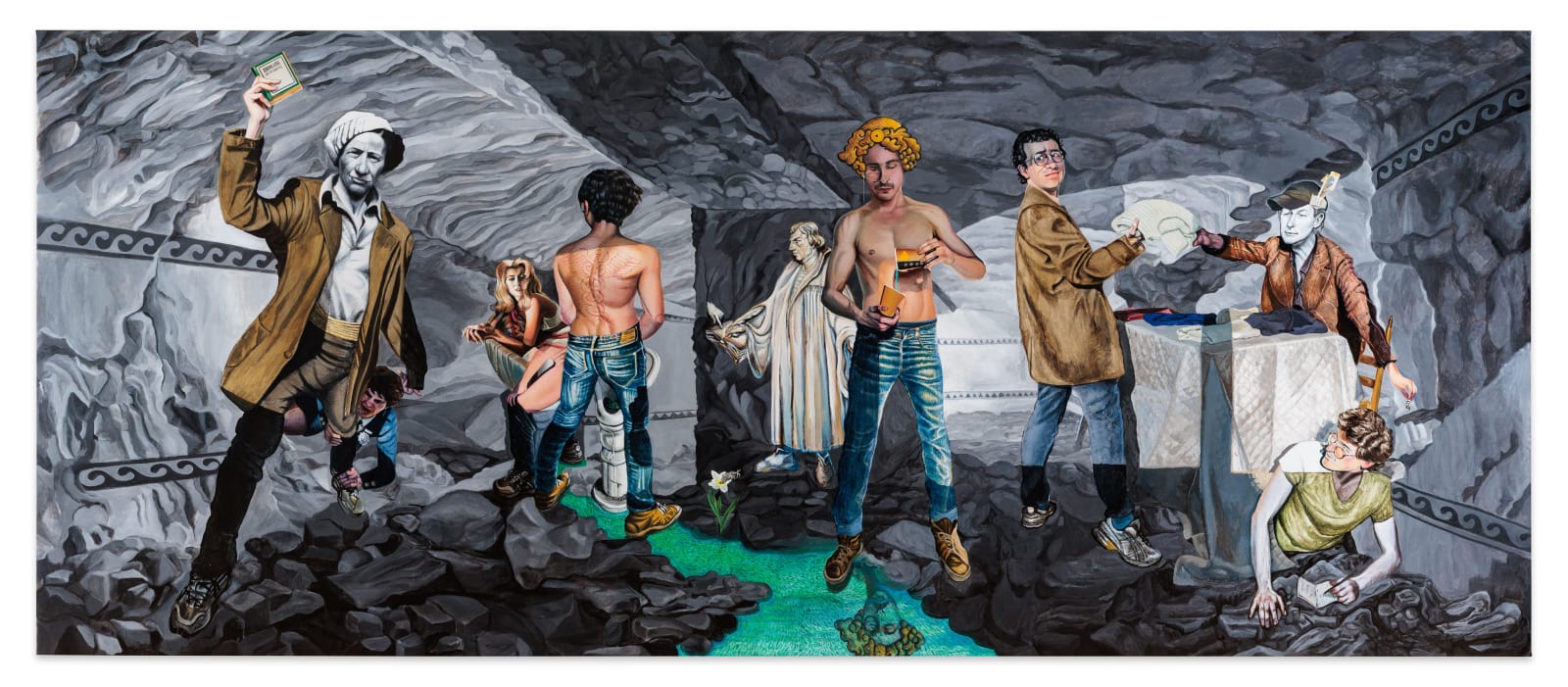Mikołaj Sobczak
MERCURY (UNDERGROUND), 2025
Acrylic on canvas
Signed and dated verso
200 x 477 cm
78.7 x 187.8 inches
78.7 x 187.8 inches
B-MSOBCZAK-.25-0003
In 'MERCURY (UNDERGROUND)', Sobczak stages a choreography of protagonists—queer activists, exiles, revolutionaries, and outlaws—whose intertwined lives reveal the ruptures of history and the unfinished work of resistance. On the left,...
In "MERCURY (UNDERGROUND)", Sobczak stages a choreography of protagonists—queer activists, exiles, revolutionaries, and outlaws—whose intertwined lives reveal the ruptures of history and the unfinished work of resistance.
On the left, Eva Kotchever (also known as Eve Adams), a Jewish-Polish immigrant and early queer activist, holds her book “Lesbian Love”—the first known lesbian fiction novel, self-published 100 years ago. She is pulled back by undercover officer Margaret Leonard, whose arrest led to Eva’s deportation from the U.S. and later death in Auschwitz.
In the center stands a figure inspired by the “Temperance” Tarot card, symbolizing balance with one foot on land and one in water.
Actress Catherine Deneuve in “Belle de Jour” appears nearby by a urinal station, showing the way fascism labels women as either pure or perverse. Klaus Theweleit describes it in his book “Male Fantasies”. He also explains how fascism replaced fear of the body liquids with control and violence.
On the right is Stanisław Chmielewski, who—with a group on his friends and non heteronormative individuals—saved Jewish lives in WWII by hiding people and providing fake identity papers. His clothing stall was a secret place for passing documents and planning actions. These moments from underground history are placed in modern settings to show that such dangers are not gone. Philosopher Adorno wrote that under the surface of European history is a hidden layer that becomes visible in fascist times. The ghost of Martin Luther, as Thomas Mann said, still haunts us as a symbol of obedience to power.
On the left, Eva Kotchever (also known as Eve Adams), a Jewish-Polish immigrant and early queer activist, holds her book “Lesbian Love”—the first known lesbian fiction novel, self-published 100 years ago. She is pulled back by undercover officer Margaret Leonard, whose arrest led to Eva’s deportation from the U.S. and later death in Auschwitz.
In the center stands a figure inspired by the “Temperance” Tarot card, symbolizing balance with one foot on land and one in water.
Actress Catherine Deneuve in “Belle de Jour” appears nearby by a urinal station, showing the way fascism labels women as either pure or perverse. Klaus Theweleit describes it in his book “Male Fantasies”. He also explains how fascism replaced fear of the body liquids with control and violence.
On the right is Stanisław Chmielewski, who—with a group on his friends and non heteronormative individuals—saved Jewish lives in WWII by hiding people and providing fake identity papers. His clothing stall was a secret place for passing documents and planning actions. These moments from underground history are placed in modern settings to show that such dangers are not gone. Philosopher Adorno wrote that under the surface of European history is a hidden layer that becomes visible in fascist times. The ghost of Martin Luther, as Thomas Mann said, still haunts us as a symbol of obedience to power.
